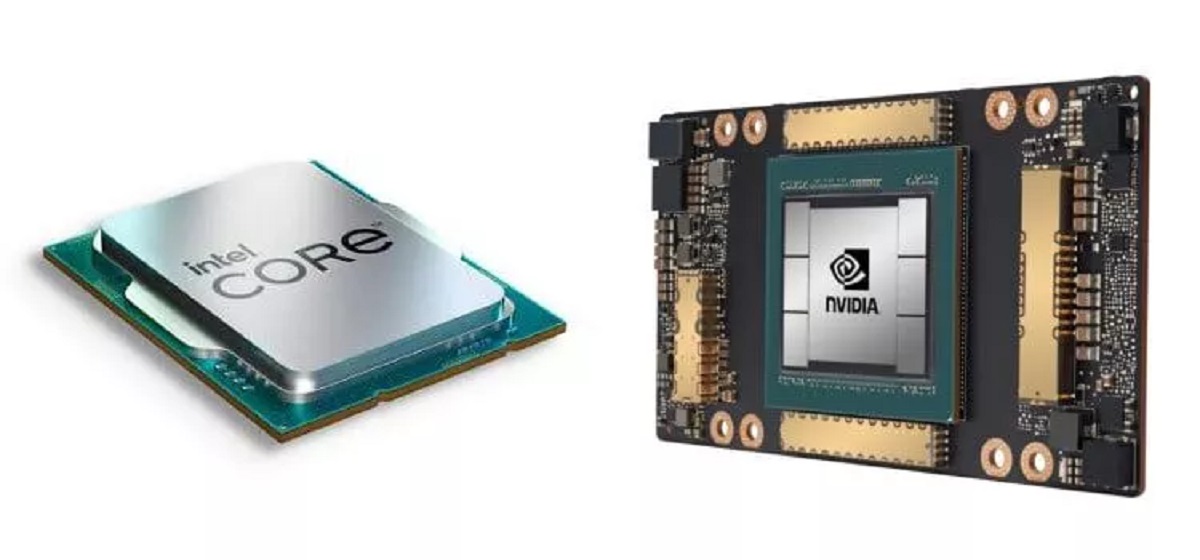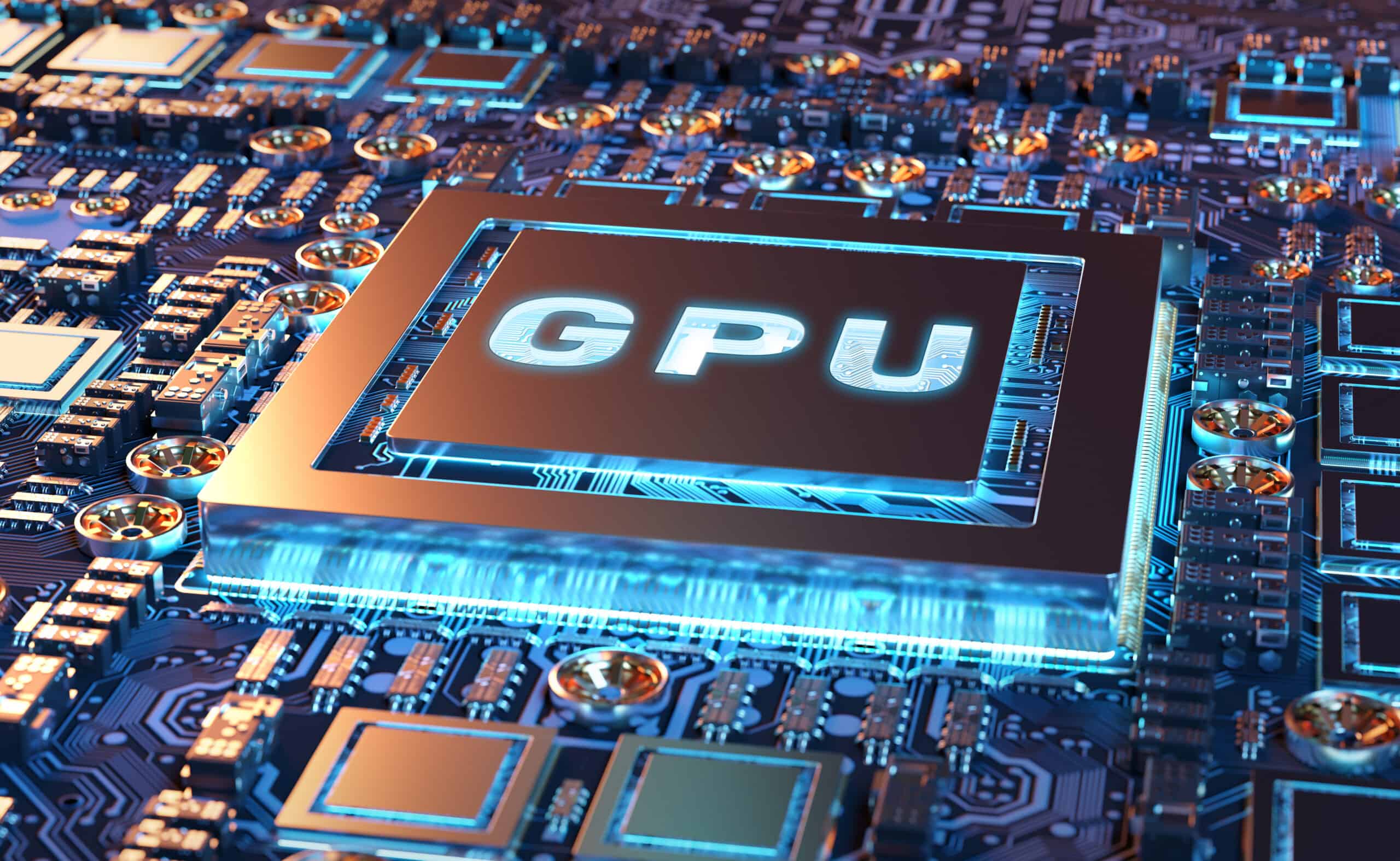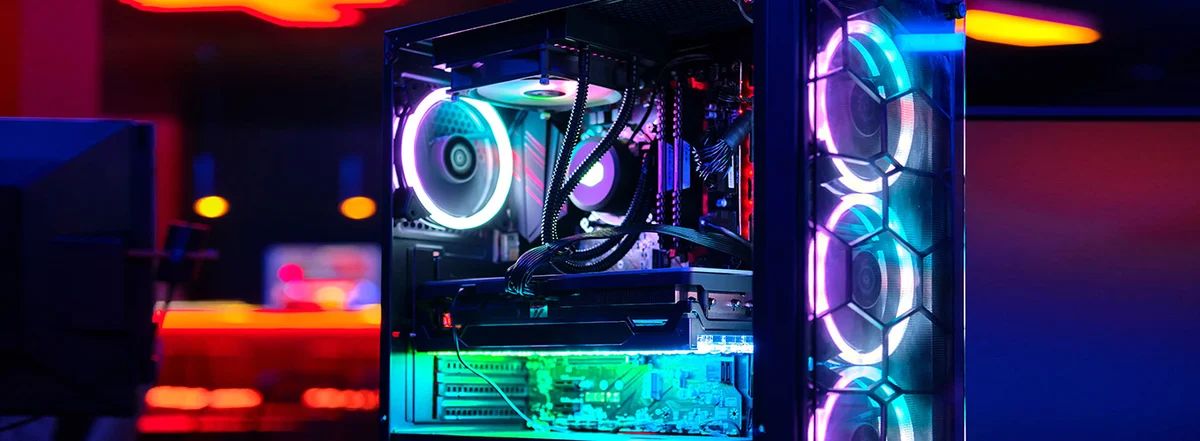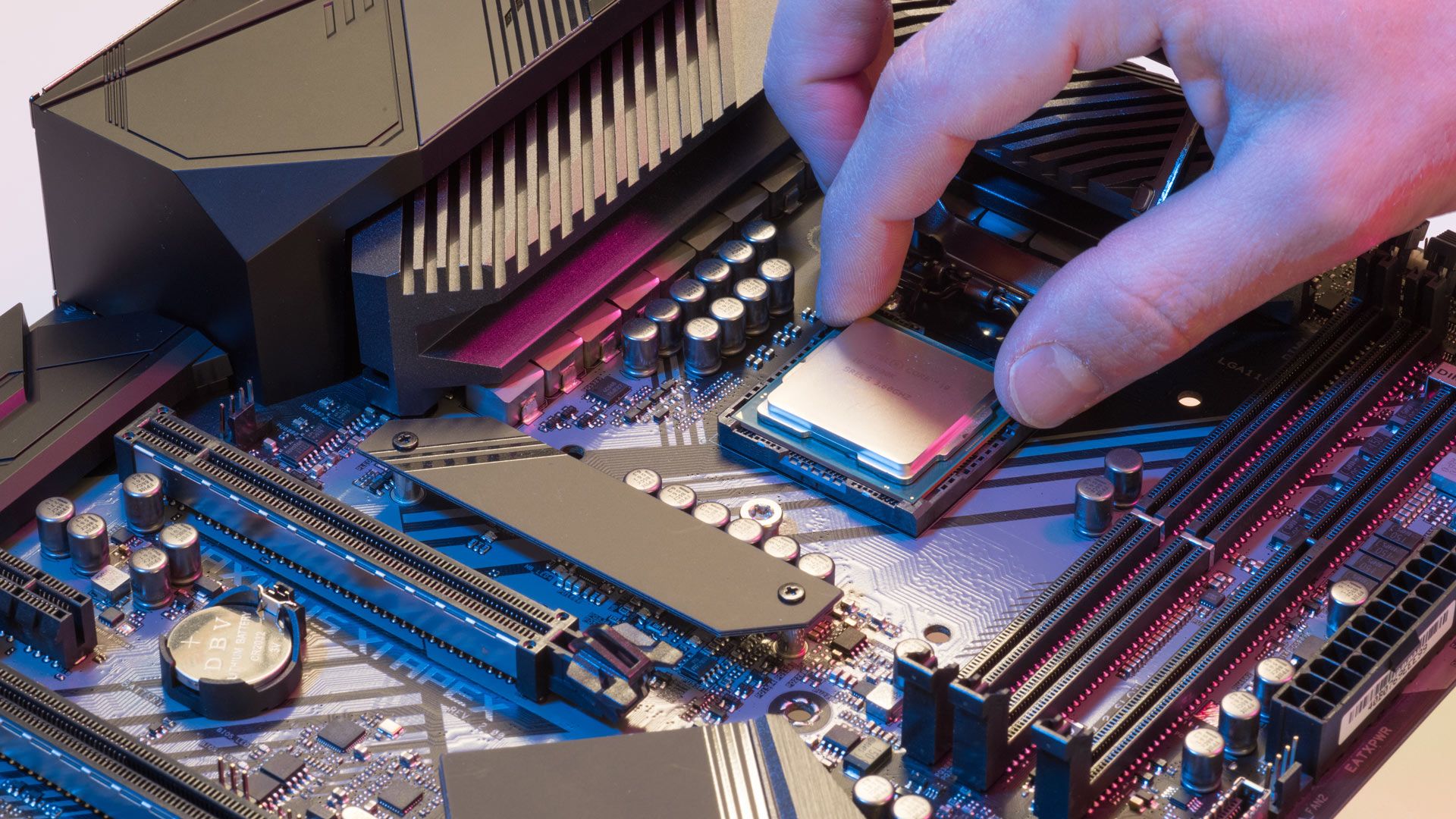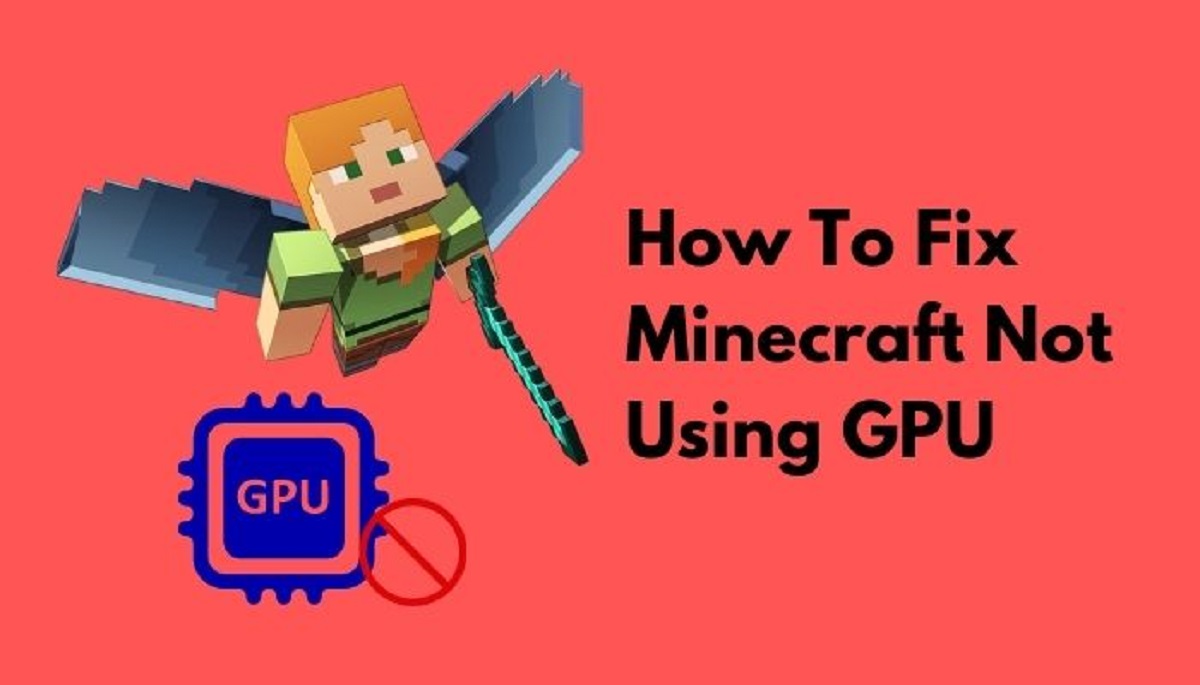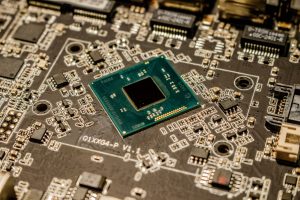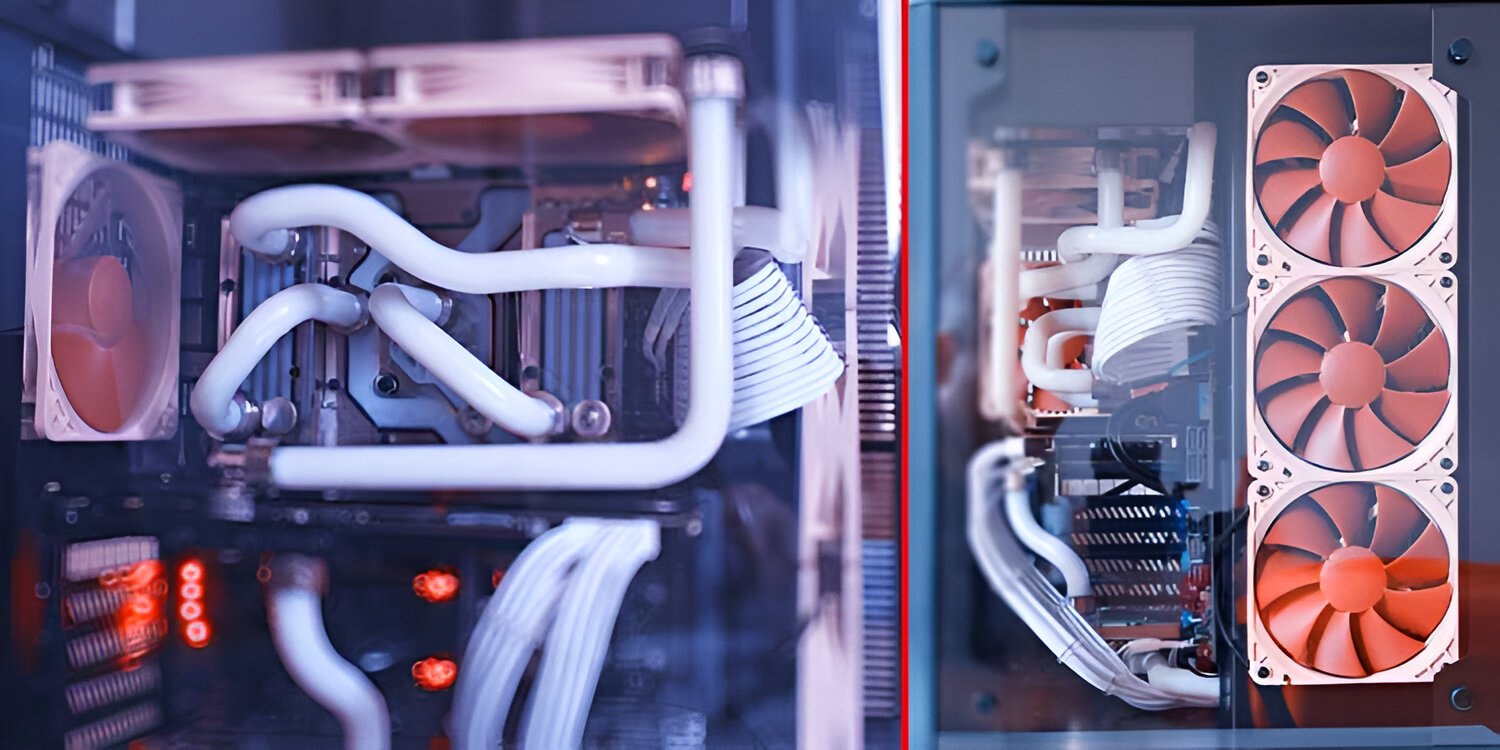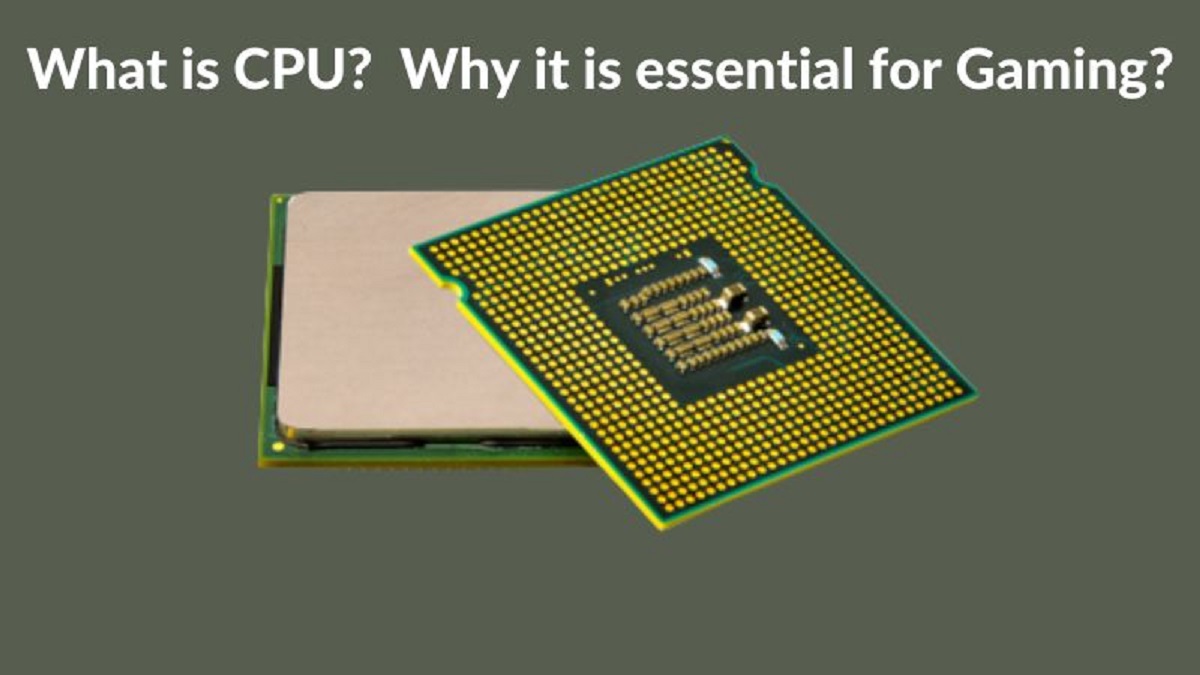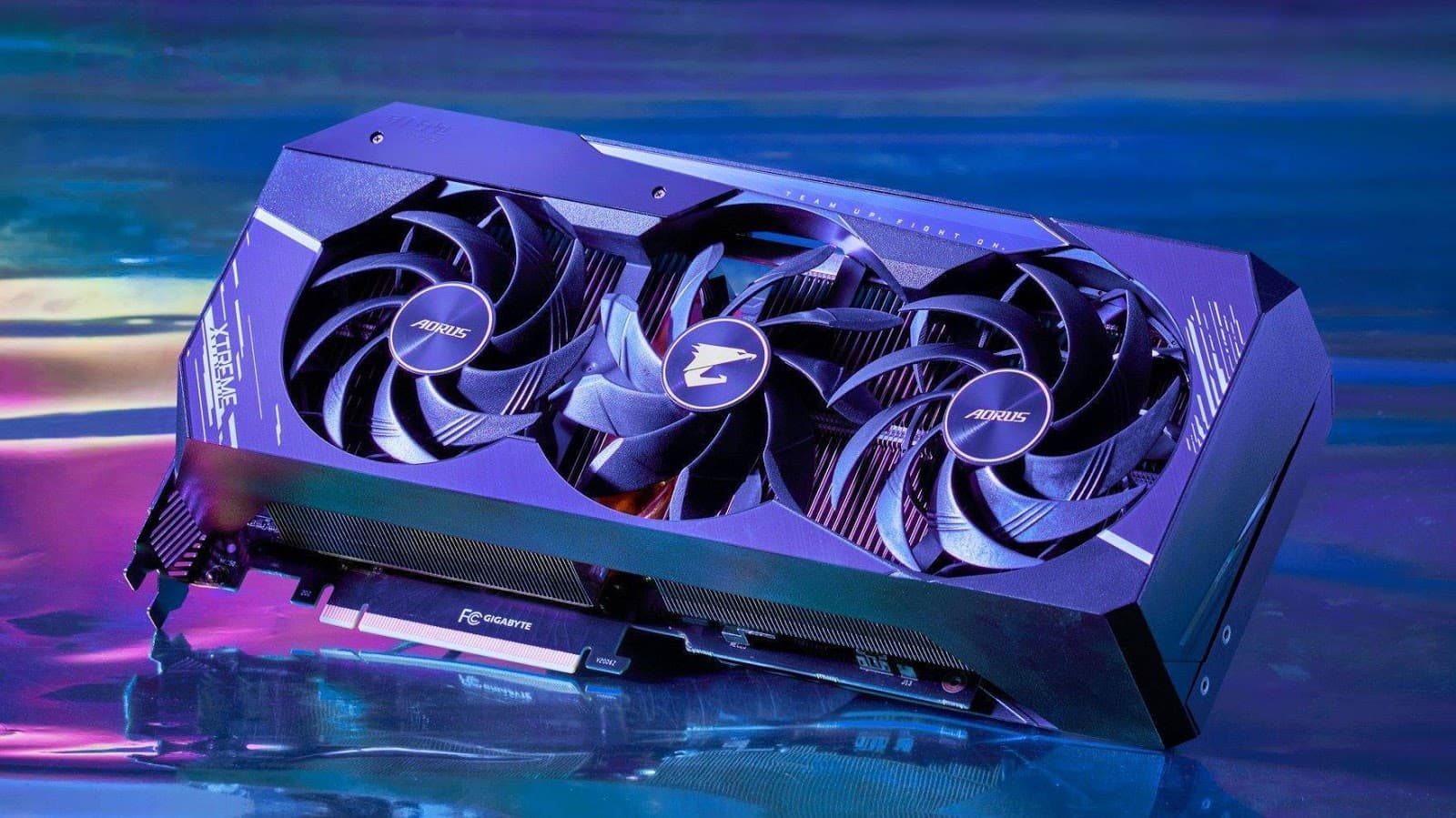Introduction
When it comes to the world of computers and technology, two of the most vital components are the Central Processing Unit (CPU) and the Graphics Processing Unit (GPU). These two powerful entities work together seamlessly to ensure the smooth and efficient operation of our devices.
The CPU can be thought of as the brain of the computer. It is responsible for executing instructions and performing calculations for a wide range of tasks. On the other hand, the GPU is specifically designed to handle complex graphics-related tasks, such as rendering 3D images, animations, and videos.
While both CPU and GPU are crucial for the functioning of modern computers, they have distinct differences in terms of architecture and functionality. Understanding their roles and how they work together can provide valuable insights into the capabilities and performance of our digital devices.
In this article, we will explore the intricacies of CPU and GPU collaboration, the impact it has on device performance, and the real-world applications that benefit from this powerful combination.
Definition of CPU and GPU
The Central Processing Unit (CPU) is the core component of a computer system. It is responsible for executing instructions and performing calculations required for various tasks. The CPU consists of arithmetic logic units (ALUs), control units, and cache memory. It fetches instructions from memory, decodes them, and then executes them in a sequential manner.
On the other hand, the Graphics Processing Unit (GPU) is a specialized chip designed to handle complex graphics-related tasks. Originally developed for rendering high-quality graphics in video games, GPUs have evolved to become indispensable in various fields, including scientific research, machine learning, and cryptocurrency mining. Unlike CPUs, GPUs are highly parallel processors, capable of performing many tasks simultaneously.
While the CPU is optimized for general-purpose computing and is designed to handle a wide range of tasks, the GPU is optimized for parallel processing and excels in performing repetitive calculations that are required for rendering graphics and processing massive datasets.
Both the CPU and GPU are crucial for the functioning of modern computers. The CPU ensures the smooth operation of the operating system and handles tasks such as running applications, managing memory, and executing complex instructions. On the other hand, the GPU accelerates the processing of graphical data, making it possible to render high-resolution images, videos, and animations in real-time.
Differences between CPU and GPU
The CPU and GPU, although both essential components of a computer system, have distinct differences in terms of architecture and functionality. Understanding these differences is crucial for optimizing performance and leveraging their capabilities effectively.
One of the primary differences between the CPU and GPU lies in their design and architecture. The CPU is composed of a few high-performance cores, typically ranging from 2 to 16 cores, with each core featuring multiple threads. These cores are designed for handling a wide range of tasks, including complex arithmetic calculations, logic operations, and general-purpose computing.
In contrast, GPUs are designed with a massively parallel architecture, consisting of hundreds or even thousands of smaller, less powerful cores. These cores work in unison to handle large amounts of data simultaneously, making them adept at performing parallel computing tasks. This parallel architecture makes GPUs particularly suited for processing graphics-intensive tasks such as rendering high-resolution images, videos, and animations. Additionally, this parallelism makes GPUs highly effective for certain types of data processing, such as machine learning algorithms and scientific simulations.
Another key difference between CPUs and GPUs is their memory hierarchy. CPUs typically have a few levels of cache memory that they use to store frequently accessed data, which helps minimize latency and speed up processing. In contrast, GPUs have larger and faster memory capacities to handle the massive amounts of data required for graphics processing. GPUs also have dedicated video memory, known as VRAM, which stores the graphics data and textures needed for rendering.
Additionally, the programming models for CPUs and GPUs differ. CPUs are typically programmed using traditional programming languages such as C++, Java, or Python, and they excel at executing general-purpose code. On the other hand, GPUs require specialized programming models, such as CUDA or OpenCL, to take advantage of their parallel computing capabilities. These programming models allow developers to harness the power of the GPU for tasks that can be divided into smaller parallel subtasks.
In summary, CPUs excel at handling a wide range of tasks with their high-performing cores and general-purpose computing capabilities. GPUs, with their massively parallel architecture, are optimized for graphics-intensive tasks and parallel computing. Understanding these differences is crucial for leveraging each component’s strengths and optimizing overall system performance.
The Role of CPU
The Central Processing Unit (CPU) plays a vital role in the functioning of a computer system. It serves as the brain of the system, executing instructions and performing calculations required for various tasks.
One of the primary roles of the CPU is to manage and execute instructions fetched from memory. It processes these instructions in a sequential manner, following the order determined by the program. The CPU decodes the instructions, determines the necessary data, and performs the required operations, such as arithmetic calculations, logical comparisons, and data manipulation.
Another crucial role of the CPU is to coordinate and manage the flow of data between different components of the computer system. It communicates with other hardware components, such as memory, storage devices, input/output devices, and network interfaces. This coordination ensures that data is retrieved, stored, and transmitted efficiently, enabling the smooth functioning of the system.
The CPU also plays a key role in managing system resources. It allocates and schedules resources, such as memory and processor time, to different applications and processes running on the system. This resource management ensures that each application gets its fair share of system resources, based on priority and demand.
Furthermore, the CPU is responsible for managing the system’s power consumption. It adjusts the clock frequency and voltage levels to balance performance and power efficiency. The CPU can dynamically adjust these parameters based on workload and system requirements, optimizing energy consumption while maintaining optimal performance.
Moreover, the CPU is the main component responsible for running the operating system and managing the execution of applications. It handles context switching, interrupt handling, and multitasking, enabling the system to seamlessly switch between different tasks.
In summary, the CPU plays a central role in executing instructions, managing system resources, coordinating data flow, and running the operating system. It performs these tasks efficiently, ensuring the overall functioning and performance of the computer system.
The Role of GPU
The Graphics Processing Unit (GPU) is a specialized component of a computer system that is designed to handle complex graphics-related tasks. While the CPU serves as the system’s overall workhorse, the GPU focuses specifically on accelerating graphical computations and enhancing visual output.
One of the primary roles of the GPU is to render high-quality graphics in real-time. It processes and manipulates graphical data, including textures, lighting, and shading, to create visually appealing images and animations. Whether it’s rendering lifelike characters in video games or creating stunning visual effects in movies, the GPU’s parallel architecture enables it to perform these calculations quickly and efficiently.
In addition to its role in rendering graphics, the GPU also plays a crucial role in accelerating other non-graphics tasks. This is made possible by its ability to handle massive amounts of data in parallel. GPU-accelerated computing has become increasingly popular in fields such as scientific research, machine learning, and data analysis. Tasks that require complex calculations or process large datasets can see significant performance improvements when offloaded to the GPU.
Furthermore, the GPU is responsible for encoding and decoding video streams, enabling smooth playback of high-definition videos. It handles the compression and decompression of video data, reducing the strain on the CPU and ensuring smooth video playback without sacrificing quality.
Another role of the GPU is to support virtual and augmented reality experiences. The GPU is instrumental in creating immersive and realistic virtual environments by rendering complex 3D scenes in real-time. It handles the demanding graphics processing required for a seamless VR or AR experience, enabling users to interact with virtual objects and environments in a lifelike manner.
Moreover, the GPU can assist in general-purpose computing tasks when programmed using specialized APIs such as CUDA or OpenCL. By harnessing the parallel processing power of the GPU, tasks such as data encryption, image and signal processing, and scientific simulations can be accelerated, leading to faster and more efficient computations.
In summary, the GPU’s primary role is to accelerate graphics-related tasks, enabling the rendering of high-quality visuals and animations. Additionally, the GPU can be utilized for parallel computing tasks in fields such as scientific research, machine learning, and signal processing. Its ability to handle massive amounts of data in parallel makes it a valuable asset in various domains, enhancing performance and enabling new possibilities in computer technology.
How CPU and GPU Work Together
The CPU and GPU, although different in architecture and functionality, work together in harmony to ensure optimal performance and efficient operation of a computer system.
One of the primary ways in which the CPU and GPU collaborate is through task delegation. The CPU acts as the orchestrator, managing overall system operations and determining which tasks are better suited for the CPU or GPU. It identifies graphics-intensive tasks, such as rendering 3D graphics or processing large datasets, and offloads them to the GPU, which excels at parallel computing and graphical computations.
When a CPU encounters a graphics-related task, it sends the necessary data to the GPU, along with instructions on how to process it. The GPU, with its specialized architecture and parallel processing capabilities, takes over the heavy lifting and performs the computations required for rendering the graphics. It then sends the processed results back to the CPU for further processing or display.
Another way in which the CPU and GPU collaborate is through shared memory. This shared memory allows for efficient communication and exchange of data between the CPU and GPU. It enables the CPU to pass data to the GPU for processing and retrieve the results seamlessly. This efficient data transfer reduces the need for excessive copying of data, minimizing latency and improving overall performance.
Furthermore, the programming model used by developers plays a crucial role in facilitating CPU-GPU collaboration. Developers can leverage programming frameworks, such as CUDA or OpenCL, to write code that harnesses the power of both the CPU and GPU simultaneously. By effectively dividing tasks into smaller parallel subtasks, developers can optimize performance by utilizing both the CPU’s general-purpose computing capabilities and the GPU’s parallel processing capabilities.
In recent years, advancements such as heterogeneous computing have further improved CPU-GPU collaboration. Heterogeneous computing platforms integrate the CPU and GPU on a single chip, enabling even closer interaction between the two components. This integration promotes efficient data sharing, eliminates the need for data transfer between separate chips, and optimizes system performance.
In summary, the CPU and GPU work together by delegating tasks, sharing memory, and utilizing programming frameworks. The CPU acts as the orchestrator, managing system operations and offloading graphics-intensive tasks to the GPU. Through efficient collaboration, they enhance system performance, improve graphics rendering capabilities, and provide a powerful computing platform that can handle a wide range of tasks effectively.
The Impact of CPU-GPU Collaboration on Performance
The collaboration between the CPU and GPU has a significant impact on overall system performance, enabling faster and more efficient computing in various domains.
One of the key advantages of CPU-GPU collaboration is improved graphics rendering capabilities. By offloading graphics-intensive tasks to the GPU, the CPU can focus on other essential computing tasks, resulting in smoother and more immersive visual experiences. Whether it’s gaming, video editing, or 3D modeling, the combined power of the CPU and GPU allows for real-time rendering of high-resolution graphics, reducing lag and delivering fluid visuals.
Furthermore, the parallel processing capabilities of the GPU greatly accelerate certain types of computations. Tasks that can be divided into smaller parallel subtasks, such as high-performance computing, machine learning, and scientific simulations, can see significant performance improvements by harnessing the power of the CPU-GPU collaboration. The GPU’s ability to handle massive amounts of data simultaneously, coupled with the CPU’s general-purpose computing capabilities, translates into faster and more efficient processing of complex algorithms and data-intensive tasks.
The impact of CPU-GPU collaboration is especially evident in fields such as artificial intelligence and deep learning. The GPU’s parallel architecture and accelerated computing capabilities enable rapid training and inference of deep neural networks, which are at the core of many AI applications. By utilizing the GPU’s processing power, the CPU can focus on managing and orchestrating the flow of data, resulting in faster AI model training and improved real-time decision-making.
Moreover, the memory hierarchy and shared memory between the CPU and GPU contribute to enhanced performance. The GPU’s dedicated video memory (VRAM) allows for efficient storage and retrieval of graphical data, reducing latency and improving rendering speed. The shared memory between the CPU and GPU enables seamless data transfer and collaboration, minimizing overhead and maximizing overall system performance.
The impact of CPU-GPU collaboration is not limited to specialized tasks. Even in day-to-day computing, the combination of the CPU and GPU can deliver improved performance and responsiveness. Whether it’s multitasking, browsing the web, or running productivity applications, the synergy between these components provides a smooth and efficient user experience.
In summary, CPU-GPU collaboration has a significant impact on performance in various domains. It enables faster graphics rendering, accelerates computationally intensive tasks, improves AI and machine learning capabilities, and enhances overall system responsiveness. The combined power of the CPU and GPU opens up new possibilities in computing, providing users with a seamless, powerful, and efficient computing experience.
Real-World Applications of CPU-GPU Collaboration
The collaboration between the CPU and GPU has found relevance and practical applications in various domains, leveraging their combined computing power to deliver enhanced performance and capabilities.
One of the primary areas where CPU-GPU collaboration shines is in the field of gaming. Modern video games require realistic graphics, immersive environments, and smooth gameplay. By offloading graphics-intensive tasks to the GPU, the CPU can focus on managing game logic, artificial intelligence, and other computations required for gameplay. The result is visually stunning games with higher frame rates, improved physics simulations, and more realistic lighting and shading effects.
Another area that benefits greatly from CPU-GPU collaboration is video editing and production. With the increasing demand for high-resolution videos and complex visual effects, the CPU and GPU work in tandem to handle the demanding processing required for editing and rendering. The GPU accelerates tasks such as color grading, rendering visual effects, and applying filters, while the CPU manages the overall editing process and ensures smooth playback.
In scientific research, the CPU and GPU collaborate to accelerate computations in fields such as physics, chemistry, and computational biology. By harnessing the power of parallel processing in the GPU, complex simulations, data analysis, and modeling tasks can be expedited. Researchers can explore larger datasets, run more iterations of experiments, and obtain faster results, leading to advancements and discoveries at an accelerated pace.
Machine learning and artificial intelligence also benefit greatly from CPU-GPU collaboration. Training deep learning models and performing complex data analysis often involves iterative processes and large datasets. The parallel processing capabilities of the GPU allow for faster training and inference, enabling the development of more accurate and efficient AI models. The CPU’s role in managing the data flow and orchestrating the execution further enhances the overall AI capabilities of the system.
Furthermore, CPU-GPU collaboration plays a crucial role in cryptocurrency mining. GPUs are highly efficient at performing the calculations required for mining cryptocurrencies such as Bitcoin and Ethereum. The parallel architecture of the GPU allows for faster hash rate computations, ensuring a higher chance of successfully mining cryptocurrencies. The CPU aids in managing the mining operation, coordinating tasks, and handling other system processes simultaneously.
In addition to these specific domains, CPU-GPU collaboration impacts everyday tasks such as web browsing, multimedia playback, and productivity applications. The synergistic collaboration between the CPU and GPU allows for smoother multitasking, faster web page rendering, and improved media playback performance.
In summary, CPU-GPU collaboration finds practical applications in gaming, video editing, scientific research, artificial intelligence, cryptocurrency mining, and various other domains. By working together, the CPU and GPU deliver enhanced performance, faster computations, and improved capabilities in a wide range of real-world applications.
Conclusion
The collaboration between the CPU and GPU is essential for the efficient and powerful operation of modern computer systems. While the CPU handles general-purpose computing tasks and manages the overall system operations, the GPU specializes in graphics processing and parallel computing. Together, they form a powerful duo that enhances performance, accelerates computations, and enables a wide range of applications.
The CPU-GPU collaboration impacts various domains, from gaming and video editing to scientific research and artificial intelligence. The GPU’s parallel processing capabilities allow for faster rendering of realistic graphics and simulations, while the CPU manages system resources and orchestrates complex operations. This collaboration leads to smoother gameplay, immersive visual experiences, and faster data processing.
Real-world applications of CPU-GPU collaboration span industries and disciplines. In gaming, the CPU and GPU work together to deliver high frame rates and stunning visuals. Video editing benefits from their combined power, enabling faster rendering and complex effects. Scientific research utilizes their capabilities to expedite simulations and data analysis. Machine learning and AI leverage the parallel architecture of the GPU to train and infer complex models more efficiently.
CPU-GPU collaboration also finds relevance in everyday tasks, such as web browsing and multimedia playback. The synergy between these components enhances multitasking capabilities, web page rendering, and media performance.
In conclusion, the collaboration between the CPU and GPU is a crucial aspect of modern computer systems. Their combined power enables faster computations, enhances graphics rendering, and opens up new possibilities in various fields. As technology continues to advance, the synergy between the CPU and GPU will play an even more significant role, driving innovation, and enabling powerful computing experiences.







